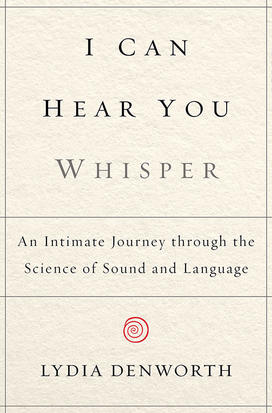One evening while Lydia Denworth ’88’s older two sons raced to greet her husband, Mark Justh ’87, as he came through the door, their 21-month-old son, Alex, remained in the kitchen, playing with a truck, oblivious to the commotion. It wasn’t until Denworth tapped Alex on the shoulder and pointed at Justh that he jumped up and ran into his arms.
For months Denworth had been worried. Alex often didn’t respond when spoken to and was saying only a few words. Soon after that evening, he was diagnosed with significant hearing loss.
A science writer, Denworth set out to understand hearing. “I wanted to figure out how best to help him,” she says. That led to a book. I Can Hear You Whisper: An Intimate Journey through the Science of Sound and Language (Dutton) is part memoir of managing her son’s hearing loss, and an exploration of sound, language, and deaf culture. She also chronicles the development and controversy surrounding the cochlear implant, a device that allows deaf people to hear. Her son received one at age 2.
Sound moves through the ear to the cochlea (the inner ear), which translates sound into electrical signals that travel along the auditory nerve and up to the brain. A cochlear implant does the work of the inner ear, bypassing a damaged cochlea. The basic components include a microphone and a speech processor — which are the part of the device that looks like a hearing aid — and electrodes that weave through the inner ear.
The FDA approved cochlear implants for adults in 1984 and for children in 1990. But they don’t work equally well in everyone, and the sound lacks the nuance of natural hearing. “The world can sound like Donald Duck,” Denworth says.
“What cochlear implants have shown us is that in fact the brain can hear with a signal that is much poorer than what we expected,” she says.
What she is reading:
Woman: An Intimate Geography by Natalie Angier, which Denworth calls “beautiful, luscious science writing that I missed when it first came out” in 1999.
When the FDA approved them for children, some deaf-culture advocates pushed back. The implant was offensive to some people in the deaf community “because it seemed to say that they needed to be ‘fixed,’” says Denworth. And they feared that cochlear implants might remove deaf children from deaf culture.
Although she understands that reluctance — and was horrified by some of the early history of forcing deaf students to be educated through oral means — she didn’t hesitate to have Alex get an implant in his right ear. He uses a hearing aid in his left ear, which has very limited hearing.
Today, he is a fifth-grader in a regular classroom. Although Alex lives in the hearing world, Denworth would like him to appreciate deaf culture. He knows a bit of American Sign Language, as his mother does.
“I feel like having a deaf child taught me how to listen better,” she says. “I hear the world entirely differently.”













No responses yet